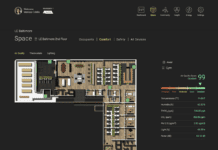More than 400 hospitals across the U.S. now rely on FM:Systems to streamline critical real estate, facilities, space, and asset data using an integrated platform. The footprint of physical space on the FM:Systems platform now supports hundreds of thousands of employees and tens of millions of square feet.

“Despite health systems and hospitals adopting various digital technologies, like electronic health records and more recently telehealth, tracking and reporting healthcare real estate, facilities, space and assets data is still largely dependent on error-prone, time-consuming manual entries,” said Kurt von Koch, CEO of FM:Systems. “With increasingly limited resources, staff, and budgets only further combined with the need to maintain compliance, a single, fully scalable workplace management platform like ours eases the transition of key facilities and real estate data to the cloud. This means, executives can more easily access and evaluate good data to make data-driven decisions for their facilities with confidence.”
As Alma Mancha, Property Operations Senior Manager of Banner Health stated, “being able to have the analytics and the data to know where the needs are, we really are going to be able to partner with our teams and our leaders to provide the best space at the time they need it. It really focuses on how we work, not where we work.”
FM:Systems’ all-in-one workplace management platform for healthcare helps organizations:
- Standardize space management data for full visibility across their entire real estate portfolio
- Digitize tracking of facilities, life safety building features (LSBF), preventative maintenance, other high-value assets for easy reporting and maintaining compliance with Joint Commission Regulations
- Pick and choose which space, asset, maintenance, and room booking application(s) that best address their immediate and future needs
- Identify significant cost savings opportunities with true occupancy, utilization, and space planning insights
- Optimize administrative and non-clinical spaces with full-service room and desk booking solution, making healthcare staff and practitioners more productive and improving patient care
- Replace manual outdated systems and processes with a cloud-based IWMS Platform that improves operational efficiency while providing enterprise wide visibility to Space, Facilities, and Real Estate Data.
In addition to the above, a key part of modernizing many healthcare facilities has been introducing modern workplace facility sensors and building Internet of Things (IoT). FM:Systems has deployed thousands of PIR (passive infrared) sensors into healthcare facilities over the past several years, as well as solutions for hoteling and desk management to address the needs of the modern, hybrid workplace. The company’s healthcare clients continue to grow not only in terms of new customers, but also in solutions deployed.
“Many of our healthcare clients now have two and three solutions deployed – a testament to choosing a platform that is both flexible and scalable to suit the organization’s most important needs today, with the ability to activate new modules as their real estate and workplace needs continue to change,” said von Koch.
“While some of the vendors with single point-solutions seemed to have really user-friendly platforms, if we ever wanted to add on a different solution, we’d have to go through the painful process to get multiple vendor agreements signed,” said Emily Laughton, Principal Architect for Sutter Health. “This undoubtedly would slow us down tremendously. FM:Systems offered us the ability to pick and choose what we wanted now, but also in the future.
“The option to use multiple different technologies within the same platform means Sutter Health can move quickly when we’re ready to add on a new module,” she continued. “I hope to eventually integrate more FM:Systems hardware because when we do, we’ll have even more complex data readily available to easily digest within the same dashboard we’re already using.”
















![[VIDEO] Collect Asset Data at the Speed of Walking a Building](https://facilityexecutive.com/wp-content/uploads/2024/02/maxresdefault-324x160.jpg)